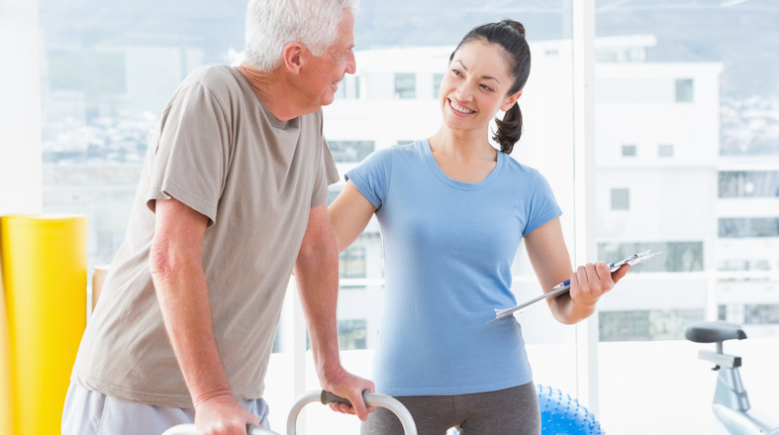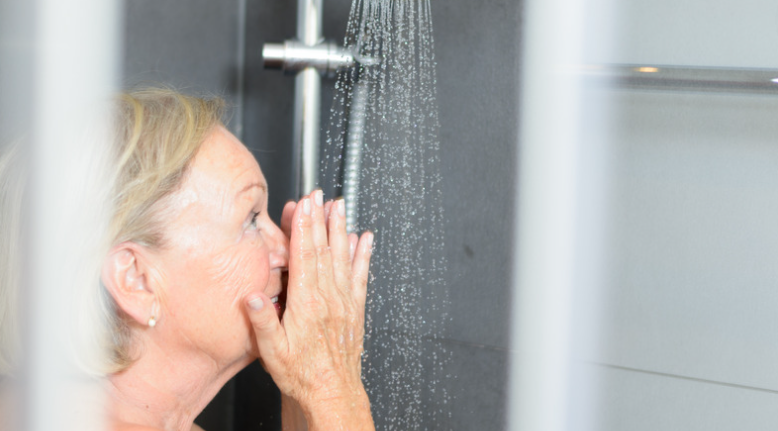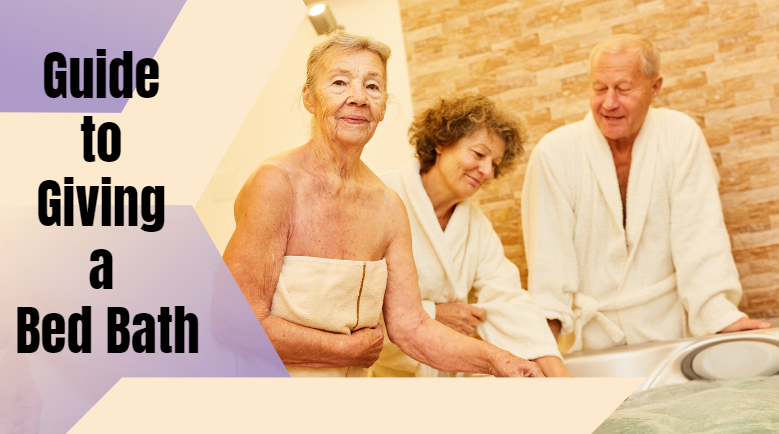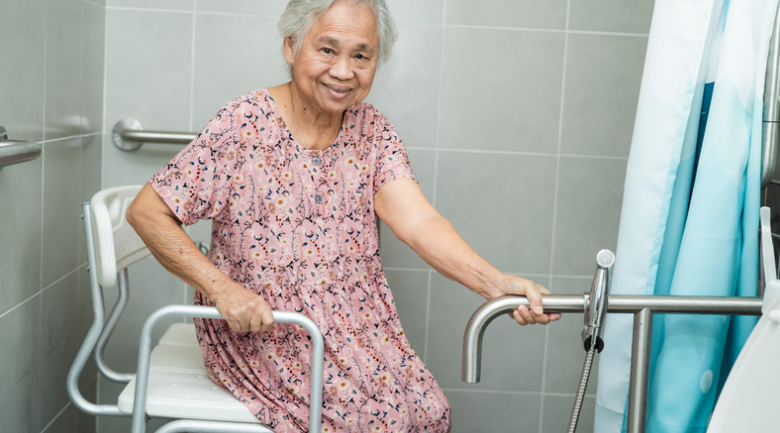Bathing is an essential activity for maintaining hygiene and overall well-being, but it can be particularly challenging for older adults. Ensuring that senior bathing is safe and enjoyable requires thoughtful preparation and the use of appropriate aids and techniques. By addressing common concerns such as slip hazards, water temperature, and accessibility, caregivers can create a comfortable environment that encourages independence and dignity. This guide aims to provide essential tips and guidance for making senior bathing a safe and pleasant experience for both the elderly and their caregivers.
The Need for Bathing in the Elderly
Regular bathing for older people goes beyond simple cleanliness. It is crucial in preventing infections, promoting skin health, and enhancing circulation. Psychologically, feeling clean can significantly improve a senior’s self-esteem and overall mood, making it an indispensable part of daily care.
Recognizing the need for specialized bathing approaches due to various health conditions is vital in caring for seniors. This ensures not only their physiological well-being but also their dignity and quality of life.
Here are some considerations:
- Mobility Issues: Limited movement may require shower chairs or transfer benches to facilitate safe bathing.
- Skin Conditions: Seniors with sensitive skin or dermatological conditions need mild, non-irritating cleansers and careful drying to avoid exacerbating their issues.
- Dementia: Individuals with cognitive impairments may feel overwhelmed; hence, a familiar routine and calming environment are essential for a stress-free bathing experience.
- Arthritis: Joint pain can make traditional bathing positions uncomfortable, necessitating ergonomic aids and adaptations.
- Sensory Sensitivities: For those with heightened sensitivities, adjusting water temperature and pressure can make bathing more tolerable.
Assessing Individual Bathing Needs
When it comes to providing care for seniors, one essential aspect that demands careful consideration is their bathing routine. The aim is to ensure that the practice is safe and enjoyable while respecting the individual’s preferences. To establish a bathing routine that is most appropriate for the individual, several factors need to be evaluated:
- Health Status: The frequency of baths or showers should be guided by a person’s overall health and any specific skin conditions. Certain health conditions require more frequent bathing, while others require less.
- Activity Level: Consider the senior’s activity level. Those who are more physically active or who perspire more need to bathe more often than those who lead a less active lifestyle.
- Personal Preference: Personal habits and cultural norms significantly affect how often an individual prefers to bathe. Considering these preferences is essential to ensure the bathing routine is comfortable and respectful.
Focusing on key areas for daily cleansing can significantly uphold a senior’s hygiene without needing full baths, which might only sometimes be feasible.
- Priority Areas: Daily washing of the face, hands, underarms, private areas, and feet can significantly reduce bacteria and odor.
- Hygiene Balance: This approach ensures that critical areas prone to bacteria and infections are kept clean, balancing thorough hygiene with practicality.
- Conservation of Energy: This reduces the physical and mental stress associated with full bathing, which is particularly beneficial for seniors with limited mobility or energy.
Addressing bathing concerns requires prioritizing the senior’s privacy and reducing the fear of falling. Implementing safety measures in the bathroom and maintaining discretion during bathing can create a more comfortable and secure experience, encouraging a positive perspective toward maintaining personal hygiene.
Senior Bathing: Effective Strategies

To gently encourage regular bathing for seniors, let’s establish a comfortable yet flexible routine, sprinkle in cheerful reminders, and make the bathroom a haven with grab bars and non-slip mats. Embrace their bathing preferences and celebrate their autonomy—it’s all about making them feel secure and respected.
1. Communication
Communication is key when encouraging seniors to bathe regularly. Start by discussing their preferences and concerns with empathy. Use positive, encouraging language and ensure they understand the health benefits. Regular check-ins about their comfort with routines can make a world of difference. Remember, it’s a dialogue, not a directive.
2. Creating a Comforting Bathing Environment
To create a comforting bathing environment for seniors, ensure safety with non-slip mats, safety railings, and adequate heating. Choose gentle, hypoallergenic bathing products for sensitive skin. By using towels and garments for privacy and enhancing security and esteem during bath time, we maintain dignity.
3. Involving Family and Friends
Encouraging seniors to maintain regular bathing habits can be gently facilitated with the involvement of family and friends. Creating a loving atmosphere and a consistent routine that respects the senior’s preferences and independence can significantly enhance their willingness and motivation to engage in regular hygiene practices.
4. Establishing a Routine
To establish a successful routine for seniors, align the bathing schedule with their natural rhythms to reduce resistance. Incorporate visual aids like calendars for clear, anticipated bath days, and use favorable terms for these days to increase eagerness. This approach maintains hygiene, boosts comfort, and enhances engagement, creating a positive, shared experience.
5. Conducting the Bath with Care
It is vital to approach bath time for the elderly with empathy and patience. Open communication during the process keeps them informed and engaged, reducing anxiety. Adjusting assistance to their abilities promotes independence and participation in their care. It’s about hygiene, respecting their dignity, and building trust.
6. Special Considerations for Bathing
Adapting bathing techniques for those with dementia, such as creating positive associations and gradually introducing the routine, reduces discomfort. Including oral, nail, and hair care, along with regular skin inspections, ensures thorough hygiene and prevents infections. This comprehensive approach enhances physical health and well-being, smoothing the bathing experience.
How Often Should a Senior Bathe?

Seniors often fare well with bathing 2-3 times a week, striking a balance between maintaining hygiene and preventing skin dryness, which is crucial for comfort and health. Tailoring the routine to personal needs is essential, ensuring both cleanliness and skin integrity.
Is Refusing to Shower a Symptom of Depression in Seniors?
It’s not uncommon for seniors to show signs of depression through changes in their daily routines, like refusing to shower. Here are some reasons why:
- Loss of Interest: Depression often causes a lack of interest in once-enjoyed activities, such as personal grooming and bathing.
- Energy Levels: Seniors with depression might struggle with low energy, making the task of showering feel overwhelming.
- Feelings of Worthlessness: They might feel unworthy of the effort that goes into taking care of themselves.
- Physical Ailments: Sometimes, physical issues that accompany aging can compound feelings of depression, leading to a neglect of personal hygiene.
- Cognitive Decline: In some cases, mental issues such as dementia can coexist with depression, affecting a person’s ability to maintain a bathing routine.
Bathing Considerations for Seniors with a Rash
Bathing seniors with a rash requires gentle care and mindfulness to avoid aggravated conditions. Choosing the correct methods and products can soothe the rash and ensure the senior’s comfort and hygiene during bath time.
- Use Lukewarm Water: Hot water can irritate the rash. Lukewarm water is gentle on the skin and helps avoid further irritation.
- Select Mild Cleansers: Avoid harsh chemicals. Use hypoallergenic, fragrance-free soaps that are kinder on sensitive skin with rashes.
- Soft Washing: Apply soap gently using a soft cloth or sponge. Avoid scrubbing the rash area to prevent exacerbation.
- Rinse Thoroughly: To prevent irritation, make sure all soap residue is washed off. Gentle water flow can help soothe the rash.
- Pat Dry: Don’t rub the skin. Pat the area dry with a soft towel to minimize irritation.
- Moisturize Immediately: Apply a fragrance-free moisturizer to keep the skin hydrated. Specific medicated creams, as recommended by a healthcare provider, can be beneficial for rashes.
- Wear Loose Clothing: After bathing, ensure the senior wears loose, breathable fabrics to prevent further irritating the rash.
Each of these considerations aims to provide a comfortable, safe bathing experience while effectively managing the senior’s rash.
Guide to Giving a Bed Bath
Providing a bed bath is an essential skill that ensures hygiene and comfort for the bedridden or those with mobility issues.
Signs That a Senior Needs to Get a Bed Bath:
- Limited Mobility: The individual cannot safely get to or use the bathroom.
- Post-Surgery Recovery: The senior is recovering from surgery and cannot be submerged in water.
- Excessive Weakness: Due to illness or fatigue, the person lacks the strength to take a traditional bath or shower.
- High Risk of Falls: The senior has a condition or medication that increases their risk of falling.
- Cognitive Impairment: Individuals with dementia or other mental issues may find traditional bathing confusing or distressing.
How to Give a Bed Bath?

Giving a bed bath involves careful preparation and gentle handling to ensure the comfort and dignity of the individual.
Things Needed in Bed Bath:
- Gloves: To maintain hygiene and prevent the spread of germs.
- Basin of Warm Water: Ensure water is at a comfortable temperature.
- Mild Soap: Gentle, non-irritating soap or body wash.
- Two Washcloths: One for soaping and one for rinsing.
- Two Towels: One for drying and one to lay under the person to keep the bed dry.
- Moisturizer: To hydrate and protect the skin after the bath.
- New Clothes and Diapers: If applicable, for changing after the bath.
- Privacy Cloth: To cover the person during the tub for dignity.
A step-by-step process for bathing a bed:
- Please explain the Process: Inform the seniors about each step to keep them calm and engaged.
- Prepare the Environment: Ensure the room is warm and free from drafts. Gather all supplies within reach.
- Wash Hands and Wear Gloves: Ensure good hygiene throughout the process.
- Cover and Uncover Appropriately: Use the privacy cloth to cover areas that are not washed and maintain modesty.
- Begin with the Cleanest Areas First: Start with the face and move downward towards the feet.
- Change Water if Necessary: Replace water when it becomes dirty or cools down.
- Gentle Drying: Pat dry each area with a towel after washing to avoid skin irritation.
- Apply Moisturizer: Hydrate and protect the skin, especially in dry areas.
- Change into Clean Clothes: Help them wear fresh clothes or gowns.
- Cleanup: Dispose of the water and clean up all used materials.
Following these guidelines, caregivers can ensure a safe, comfortable, and dignified experience when giving a bed bath.
Post-Bath Care
Drying off immediately and moisturizing right after a bath is critical to avoiding skin issues like dryness and irritation. It’s essential to lock in moisture for a healthy skin barrier.
Post-bath, choose comfortable, breathable clothes to stay warm. Soft, natural fibers best maintain a cozy body temperature without irritating the skin.
Final Thoughts
Respectful and safe bathing practices are essential in elderly care. Caregivers must adapt to seniors’ specific needs and preferences to ensure comfort and dignity. We encourage sharing personal experiences and tips, building a caring and knowledgeable community that supports each other in elderly caregiving.
Understanding the limits of personal caregiving highlights the importance of professional help. Hope in Home Care, a top agency in Monroe, NC, offers experienced caregivers who prioritize your loved one’s needs, including specialized bathing assistance. For those seeking skilled and compassionate care, consider us your trusted partner. We encourage sharing personal experiences and tips, building a caring and knowledgeable community that supports each other in elderly caregiving. Reach out to Hope in Home Care today.


